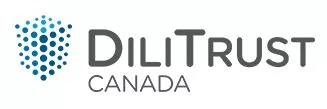Companies that view Environmental, Social Governance (ESG) as mere compliance or dismiss the practice as a regulatory burden are missing opportunities. Preparing a company to manage ESG may seem daunting, but theses insights into your impacts and stakeholders are essential to the long-term relevance of your company.
ESG Leadership
Creating the most value from ESG measurement and target-setting requires leadership and resources. The CEO should set the tone and connect social and environmental value creation to the organization's purpose, beyond profit, and provide the company with their ‘north star'.
Consider creating these leadership roles and committees:
Board of Directors, ESG Sub-Committee – ESG disclosures require oversight from a board audit or governance committee and incentivizing impacts in the executive compensation plan keeps ESG in focus.
Senior Executive, ESG Committee – A cross-functional executive committee should be created, representing the sources of information being collected and the interconnectedness of the impacts across operations, finance and human resources.
Chief Sustainability Officer (CSO) – The CSO provides executive leadership on both the social and the environmental sustainability of the company's operations.
You may consider elevating someone internally with the operational knowledge and corporate access to act as your ESG controller, but that person must also own the strategy, and it may be necessary to bring in outside advisory help with expertise in the subject matter and knowledge of the process.
They will guide you and help identify, consult with, and map all stakeholders and their issues assessing the materiality of your operations to your financial operation and its overall social and environmental sustainability for both direct and indirect stakeholders. However, many companies are making these hires and not positioning them for success. CSOs should function independently and report directly to the CEO.
Engaging your team on MSG
Once leadership and the Board are aligned on their ESG priorities, every department has an opportunity to contribute to a thriving ESG practice. Here are a few important connections to be made:
Operations – Newly created ESG policies will impact processes, so the operations team is essential to helping you achieve carbon reduction and waste diversion targets. The operations teams are often closest to the community that supports your company.
Finance – The CFO will be a key stakeholder in the disclosure preparation process, formation of a procurement team and any related buying policy adjustments, and targeted reduction in a material or ethical procurement standards implementation.
Investor Relations – Understand which investment analysts are tracking and rating your ESG performance.
Government Relations – Ensure that your political lobbying efforts are not in conflict with your public environmental commitments and continue to share your ESG progress with municipal, provincial and federal representatives.
Human Resources – Work with HR to consult with staff, listen to their priorities, engage them in ESG planning and target-setting, and provide employee engagement opportunities at the site and community level, empowering your staff to champion local initiatives.
Communications – The annual reporting process can take the better part of a year and communications is a critical partner from the beginning. Authentically communicating what you're doing well and where you need to improve will set the tone for all internal and external ESG communications.
Information Technology – Develop a management strategy for annual ESG data collection. Utilize existing databases and identify gaps in data collection. If your operations are complex, you may consider investing in an ESG software service to aid in the collection and analysis of the disparate data sets. The first reporting cycle takes the longest, but the time invested in setting up systems in year one will make the annual reporting process more efficient.
ESG Stakeholder Value
Because ESG reporting is so focused on public disclosure to external stakeholders, some of the most overlooked and underappreciated stakeholders in the creation of an ESG strategy are your employees. Your team members want to be proud of where they work and how their company is viewed by others.
Engaging your teams early and often in the process will foster engagement: clarify intentions and how they can help, promote innovation, and create regional site-specific sustainability teams with a shared call to action.
In the third and final part of this ESG series, we will link to the “Let's Talk Governance” keynote and conclude our series with why ESG is an important call to action for a more just, sustainable world.
The content of this article is intended to provide a general guide to the subject matter. Specialist advice should be sought about your specific circumstances.


